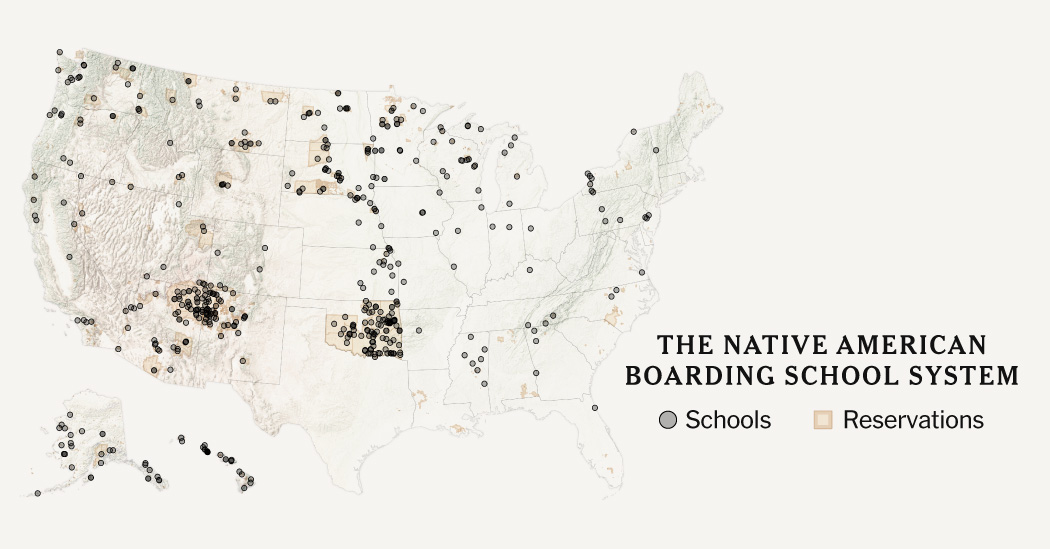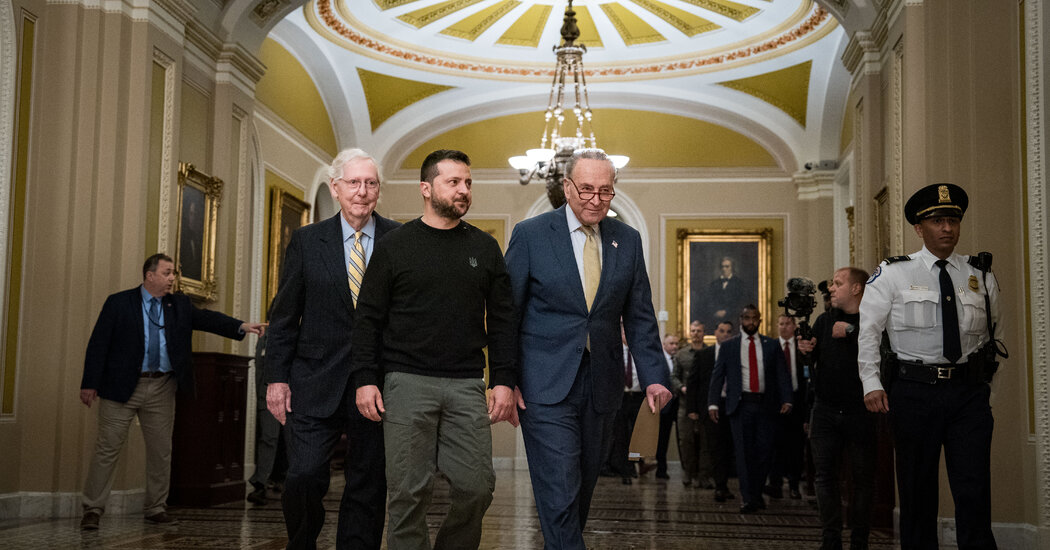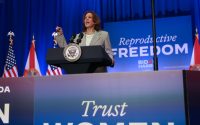A Chaotic Night at U.C.L.A. Raises Questions About Police Response
Nearly two weeks after a pro-Palestinian encampment at the University of California, Los Angeles, was attacked by counterprotesters, university officials still have not explained why security officers stood by for hours while the attack was underway, nor have they arrested any of those who swarmed in wielding metal rods, water bottles and firecrackers in one of the worst outbreaks of violence in the college protests that have rocked the country.
The extent of the policing failure has become clearer in recent days, as witnesses have come forward to describe a chaotic night of violence on April 30, in which students and bystanders repeatedly called 911 and nonemergency lines, finding little help and calls that were disconnected. A dispatcher told one caller pleading for help that they were ending the call because “I have actual emergencies to handle.”
One man was filmed by a local television station on the phone with emergency dispatchers, alerting them that people were getting hurt. “Security has abandoned this encampment,” he could be heard saying before lowering his phone and looking at it. “They just hung up on me again,” he said incredulously.
Miles away in Sacramento, staff members in Gov. Gavin Newsom’s office contacted the U.C.L.A. chancellor’s office shortly after 11 p.m. to make sure that law enforcement officers were responding to the scene, and were assured that more officers were coming, according to a person familiar with the situation, who described the discussions on condition of anonymity because they were not authorized to make them public.
But as the night wore on and there was still no intervention, the person said, the governor’s office moved to circumvent local authority and ordered California Highway Patrol officers to the campus. The state officers began assembling on campus at 1:45 a.m., a few moments before L.A.P.D. riot police arrived, but it took another hour to quell the clashes.
The chancellor’s office, the L.A.P.D. and an outside consultant hired to investigate the tardy response have all declined to discuss it, pending the outcome of an inquiry that could take weeks or months. The campus police chief, John Thomas, also did not comment,. He told The Los Angeles Times that he had relied on private security officers who were not authorized to make arrests, but that he had done “everything I could” to keep students safe.
To understand what happened, New York Times journalists conducted interviews with several people who were at the protests that night, including two people who were involved in the counterprotest; reviewed and analyzed video footage; and spoke with organizations involved in both the pro-Palestinian and pro-Israeli movements on campus.
The review found no public callouts for such a violent attack and no clear signs that one group coordinated the attack, though some people had arrived wearing black clothes and masks and seemingly prepared for violence. There was also no indication that the police had prepared for the kind of severe assault on the encampment that took place.
Instead, it appeared that contract security officers who did not have sufficient authority or numbers to halt the escalating melee had been caught by surprise and left to wait for reinforcements that did not arrive for hours.
“Either the university was hesitant to do anything to get law enforcement involved, or law enforcement was dealing with authorization issues and political considerations from elected officials,” said Ed Davis, a former Boston police commissioner who is familiar with crowd control policing issues. “And then things got out of hand.”
Despite growing concern on campus about the pro-Palestinian encampment, complaints about antisemitic incidents and the potential for violence, in the early days of the protests, university officials made it clear that they would consider calling in outside police only as a last resort.
“We are following University of California systemwide policy guidance, which directs us not to request law enforcement involvement preemptively, and only if absolutely necessary to protect the physical safety of our campus community,” Mary Osako, the vice chancellor for strategic communications, said in a statement on April 26, shortly after the encampment had been set up.
On the night of April 30, a range of counterprotesters had gathered, a group that grew in size as expectations mounted that the police would begin dismantling the encampment. In interviews, witnesses said there had been little warning before counterprotesters went on the offensive.
One of the counterprotesters, Liel Asherian, was seen on video footage kicking at the encampment’s plywood barrier, pulling boards to the ground and slamming a tennis racket against the wood that remained He said he had gone that night to see the encampment on his own, though he later acknowledged that a friend of his was also pictured at the scene. In an interview, he said he was not part of any group and had not intended to participate in a conflict.
Mr. Asherian said he had approached the pro-Palestinian encampment to ask some people why they were protesting. He said he believed Jewish people such as himself and Palestinians were like cousins, and he expressed alarm at the innocent Palestinians being killed in Israel’s military campaign. But he said he disliked the disruptive tactics the pro-Palestinian protesters were using at U.C.L.A.
He said things devolved when someone called him a “dirty Jew” and he was doused in pepper spray.
“That made me start breaking down their barricades,” he said.
Also among the counterprotesters that night was Narek Palyan, an activist known for making frequent antisemitic statements, as well as comments critical of gay and transgender people. He said he went alone and was motivated to show up in part because he had seen a video of a Jewish woman on the pro-Palestinian side criticizing white people.
“I wanted to go find her, specifically,” he said, adding that he was not able to.
Mr. Palyan said he did not necessarily support either side in the protest or the war.
He said he spent much of the night asking people questions about their positions and trying to keep people from fighting by throwing makeshift weapons into nearby bushes. Mr. Palyan, who is Armenian-American, also said he had warned two younger Armenian boys to stay out of the melee.
“I told them, ‘This isn’t ours,’” he said.
Anthony Cabassa, a self-described conservative independent journalist who posted videos of the chaos, said many people may have flocked to the scene on Tuesday night in the hours after U.C.L.A. declared the encampment illegal, believing that the police would move in to clear it and make arrests.
But then the counterprotesters descended on the protest, pulling metal gates away from the group and attacking protesters.
“We were all waiting for the L.A.P.D. to show up, and they never did,” Mr. Cabassa said in an interview. “As the night went on, more and more pro-Israel folks started showing up, to the point where it was starting to get worrisome.”
He said some people seemed to have arrived after seeing broadcasts of the tense scene that he and other livestreamers made, wanting to witness what would happen next.
“People were responding to my livestream and saying ‘I just showed up because of you. I live nearby,’” he said. But others, he said, appeared to have planned for potential clashes, wearing all-black outfits and ski masks. Mr. Cabassa recalled being concerned about their presence.
In the end, more than 30 protesters were injured, according to the Council on American-Islamic Relations Los Angeles, before police dispersed the crowd.
Brian H. Levin, the founding director of the Center for the Study of Hate and Extremism at California State University, San Bernardino, said that, with religion and ethnicity at the heart of the recent protests, the attack had amounted to a hate crime.
“This comes at a time when major U.S. cities, including Los Angeles, have had a surge in anti-Arab and Muslim hate crimes and have hit a record for anti-Jewish crimes,” he said.
Mr. Levin watched the incident via livestream and said the weapons, the presence of some of the same people from previous protests and the waving of a yellow flag associated with Chabad-Lubavitch, a Hasidic Jewish movement, suggested some organizational coordination among the counterprotesters.
The director of the nearby Chabad House said the group had no role in the protest that night.
But he also noted that some of the implements wielded by the counterprotesters “were spontaneous weapons of opportunity,” and that some people “may have just showed up randomly with their own separate xenophobic and religious bigotries.”
The next day, after the counterprotesters had left, police officers moved in to remove the pro-Palestinian encampment, making more than 200 arrests.
Marie Salem, a U.C.L.A. graduate student and one of the protesters, questioned why the police had arrested dozens of student protesters but had not yet arrested any of those who had attacked them.
“The majority of the encampment is students that attend this university, and who were not violent,” Ms. Salem said. “We were met with violence, and the other side looked like majority not-students, which the university chose to protect over their own students.”
Jonathan Wolfe and Shawn Hubler contributed reporting. Susan C. Beachy and Kitty Bennett contributed research.


